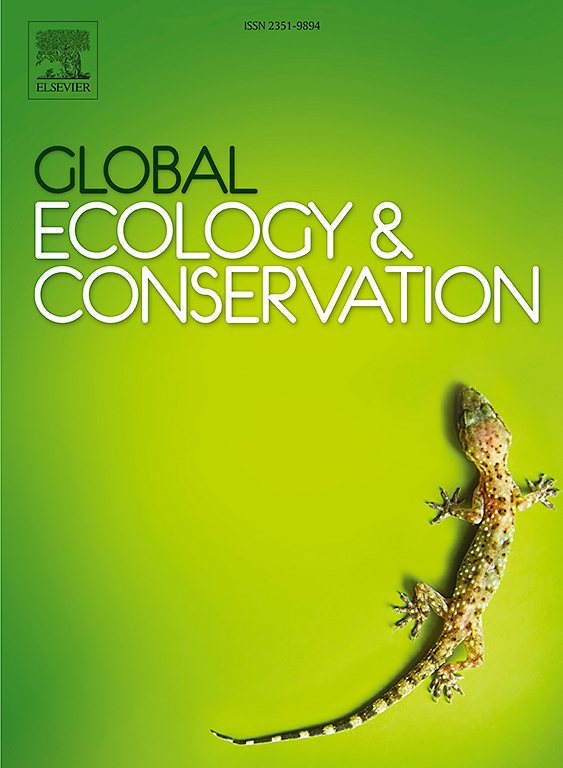Drivers of biomass dynamics in a tropical seasonal rainforest of Southwest China: The roles of environment and forest attributes
IF 3.5
2区 环境科学与生态学
Q1 BIODIVERSITY CONSERVATION
引用次数: 0
Abstract
Tropical forests play a crucial role in global carbon storage, yet the influence of environmental factors and forest attributes on community-level biomass remains poorly understood. We investigated the intricate relationships between environmental variables, forest characteristics, and biomass, while also examining phylogeny-based patterns of demographic change. Based on the data of full plot censuses in 2007, 2012 and 2017 respectively, we assessed how environmental conditions and forest structure affect both live and dead biomass dynamics in a seasonal tropical rainforest in Xishuangbanna, Southwest China. We used Structural Equation Models (SEM) to quantify these relationships. Furthermore, by integrating long-term seasonal dendrometer band monitoring data from ∼273 species (2009–2017) with the census data, we used Blomberg’s K to detect phylogenetic signals linked to demographic changes. Our SEM results reveal that soil carbon (SC) and rainfall (RF) are the strongest drivers of both live and dead biomass, with SC significantly influencing dead biomass and solar radiation (RD) impacting live biomass. Forest structures, particularly large-diameter trees (LDT; trees with DBH ≥ 50 cm) and the upper tree canopy (UTC; trees with a height ≥ 30 m), also play critical roles. RF is vital for maintaining large and mid-story trees, serving as one of key contributors to live biomass. These findings highlight the importance of water availability and soil carbon in sustaining tropical forest biomass, informing ecosystem management and carbon sequestration strategies. Phylogenetic analyses indicate that tree mortality exhibits stronger phylogenetic signals than growth and recruitment, suggesting a closer link between evolutionary history and mortality patterns. Overall, this study underlines the significance of abiotic controls, particularly rainfall and soil carbon, alongside biotic factors such as forest structure, in shaping biomass dynamics. Our findings enhance the understanding of tropical forest ecosystem processes and offer valuable insights for conservation amid climate change.
求助全文
约1分钟内获得全文
求助全文
来源期刊

Global Ecology and Conservation
Agricultural and Biological Sciences-Ecology, Evolution, Behavior and Systematics
CiteScore
8.10
自引率
5.00%
发文量
346
审稿时长
83 days
期刊介绍:
Global Ecology and Conservation is a peer-reviewed, open-access journal covering all sub-disciplines of ecological and conservation science: from theory to practice, from molecules to ecosystems, from regional to global. The fields covered include: organismal, population, community, and ecosystem ecology; physiological, evolutionary, and behavioral ecology; and conservation science.
 求助内容:
求助内容: 应助结果提醒方式:
应助结果提醒方式:


